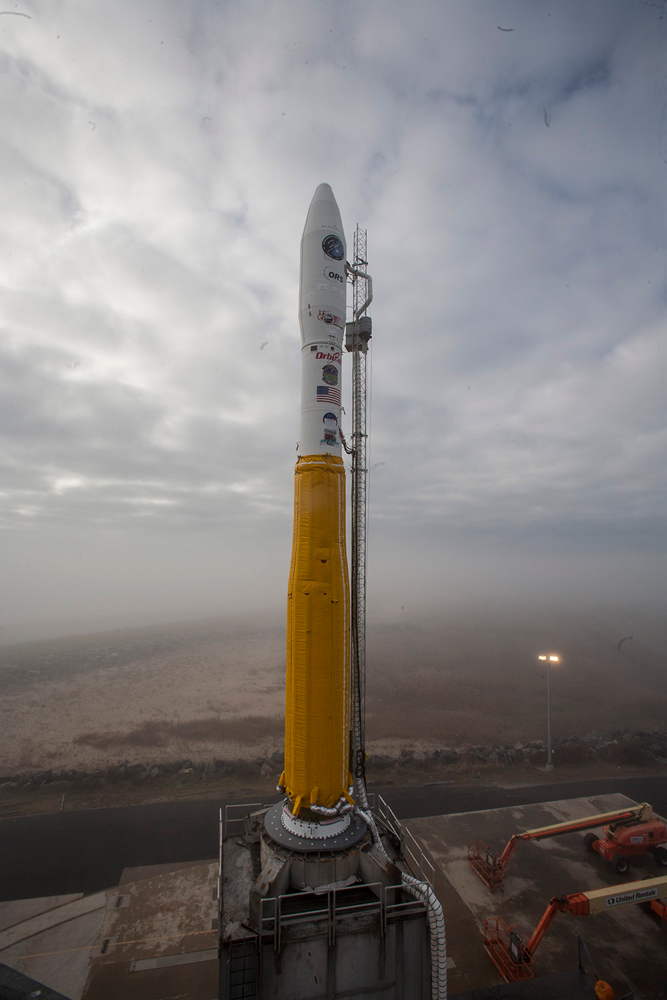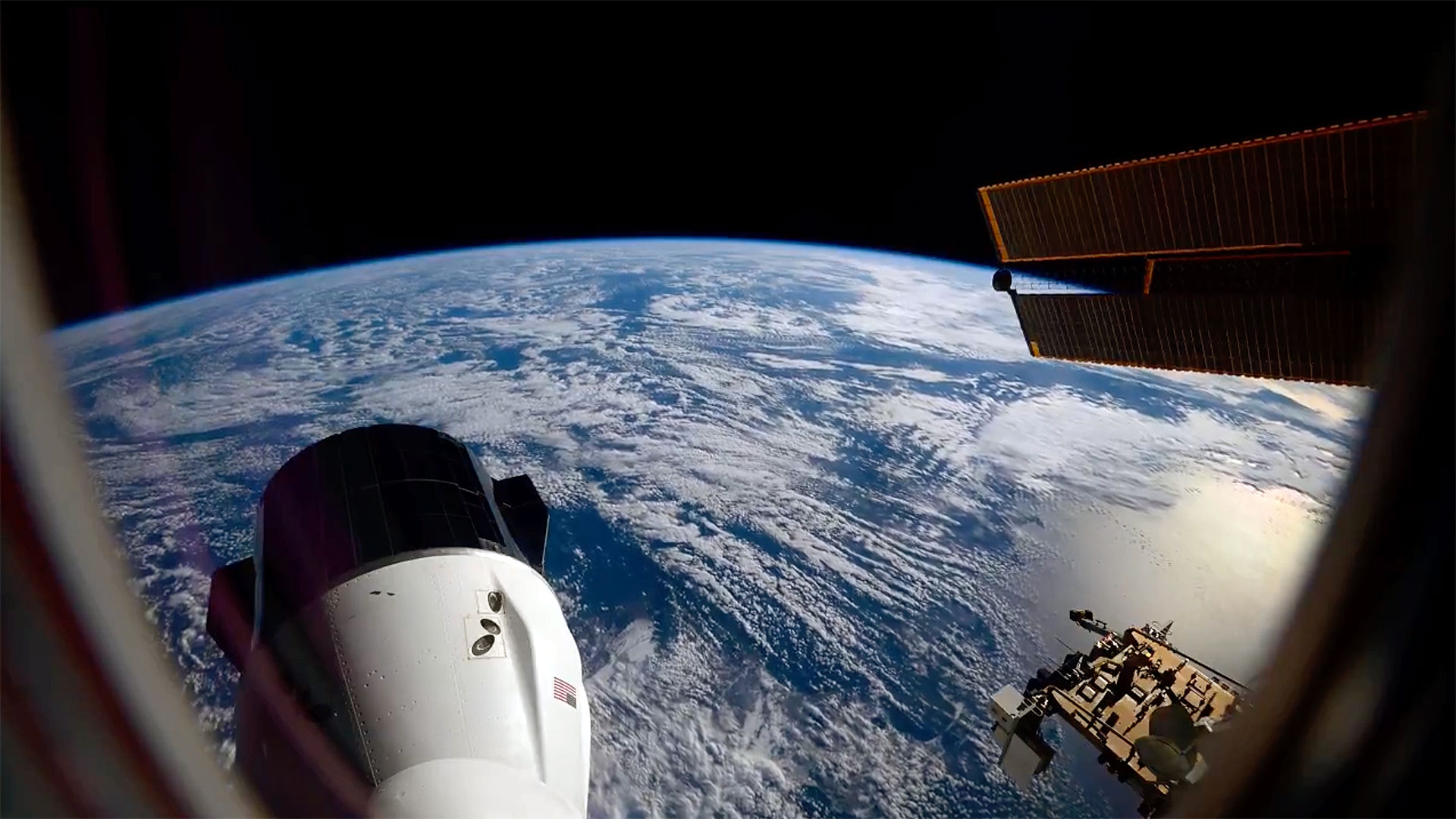Record-Setting Rocket Launch on Nov. 19: The 29 Satellites

Update for 8:52 pm ET, Nov. 19: Tonight's Minotaur 1 rocket launch has successfully launched into orbit with a record 29 satellites aboard. Read the full story: Dazzling Nighttime Rocket Launch Puts 29 Satellites In Orbit, a New Record
The United States military's ORS-3 mission is slated to blast off Tuesday night (Nov. 19) carrying 29 different satellites — the most ever in a single launch, mission officials say.
ORS-3 is scheduled to lift off atop a Minotaur 1 rocket from NASA's Wallops Flight Facility in Virginia between 7:30 p.m. and 9:15 p.m. EST Tuesday (0030 and 0215 GMT Wednesday) in a launch that should be visible from much of the U.S. East Coast, weather permitting.
Here is a description of most of the 29 satellites destined for Earth orbit. The information was provided by the U.S. Operationally Responsive Space Office, which is running the ORS-3 mission. [Can You See It? Visibility Maps for Nov. 19 Rocket Launch (Gallery)]
STPSat-3: Provided by Ball Aerospace for DoD's Space Test Program. The STPSat is a standard interface vehicle for the U.S. Air Force Space and Missile Systems Center, Space Development & Test Directorate (SMC/SD).
The STPSat-3 spacecraft will support six payloads: Integrated Miniaturized Electrostatic Analyzer Reflight, a US Air Force Academy mission designed to measure plasma densities and energies; Joint Component Research, an Air Force Research Laboratory and Army Space and Missile Defense Command space phenomenology mission; Strip Sensor Unit, an AFRL risk reduction on-orbit testing and sensor assembly experiment; Small Wind and Temperature Spectrometer, a Navy Research Laboratory mission to characterize the Earth's ionosphere and thermosphere; TSI Calibration Transfer Experiment, a NASA/NOAA mission to collect high accuracy and precision measurements of total solar irradiance; MMA Design LLC De-Orbit Module to be used to accelerate the de-orbit phase of the satellite to well under 25 years. Sponsored by the Space Test Program.
SENSE SV 1 & 2: Provided by the SMC-XR. 3U CubeSats that assess nanosat utility for space weather characterization, GPS radio occultation, In-situ ion, neutral composition and ionospheric UV nightglow. Sponsored by the Space Test Program.
Breaking space news, the latest updates on rocket launches, skywatching events and more!
Prometheus: Provided by Los Alamos National Laboratory. 1.5U CubeSat is a system with the dual objective of evaluating new low-cost development and operations methodologies while also assessing the operational utility that can be provided with CubeSat technology. The Prometheus system consists of CubeSats along with supporting ground and field segment equipment, all designed as an integrated system. Sponsored by the Operationally Responsive Space Office.
ORSES: Provided by the Space Missile Defense Center. 3U CubeSat collaboratively developed between the ORS Office and SMDC to provide communications and data for underserved tactical users. The SMDC-1 baseline was upgraded with a Software Defined Radio (Vulcan Wireless) and NSA Type-I encryption (Raytheon) Gryphon device. Sponsored by the Operationally Responsive Space Office.
Horus: Provided by the National Reconnaissance Office. 3U CubeSat second generation miniature satellite accessing performance of the space-based telescope for actionable refinement of ephemeris (STARE)—dedicated to the observation of space debris. Sponsored by the Operationally Responsive Space Office.
ORS Tech 1: Provided by the Johns Hopkins University Applied Physics Laboratory. 3U CubeSat demonstration of multi-mission bus architecture. Sponsored by the Operationally Responsive Space Office.
Firefly: Provided by the National Reconnaissance Office. (NASA Goddard) A cubesat experiment to study atmospheric effects of lightening. Sponsored by the Operationally Responsive Space Office.
Ho'oponopono: Provided by NASA LSP (ELANA). (University of Hawaii) Will demonstrate the feasibility of a 3U CubeSat supporting orbital radar calibration capabilities to the United States Air Force by providing a source for radar interrogations, as well as collecting, disseminating, and forwarding ephemeris data. Sponsored by the Space Test Program.
KySat-2: Provided by NASA LSP (ELANA). (Kentucky Space Consortium) A technology demonstrator that builds upon the resources developed under the original KySat-1 mission. Sponsored by the Space Test Program.
DragonSat-1: Provided by NASA LSP (ELANA). (Drexel University) An experiment to test the deployment of a gravity gradient boom. Sponsored by the Space Test Program.
NPS-SCAT: (Provided by NASA LSP (ELANA). Naval Post Graduate School) A solar cell array tester using the CubeSat form factor. SCAT measures the characteristics of solar cells and how they degrade over time in the space environment. Sponsored by the Space Test Program.
Trailblazer: Provided by NASA LSP (ELANA). (University of New Mexico) A proof of concept mission for Space Plug- and-play Architecture as well as Space Weather science research. It is designed to show how a variety of commercial parts can be modified to perform on open source bus architecture. In addition, it is flying a dosimeter as well as a 3D conformal printed circuit board serving as an IMU. Sponsored by the Space Test Program.
ChargerSat-1: Provided by NASA LSP (ELANA). (University of Alabama-Huntsville) Will improve communications for picosatellite operations, demonstrate passive nadir axis stabilization for picosatellite attitude control, and improve solar power collection for picosatellite operations. Sponsored by the Space Test Program.
PhoneSat 2.4: Provided by NASA LSP (ELANA). (NASA ARC) The PhoneSat aims to evaluate the effectiveness of cheap COTS hardware for use in space while increasing capabilities and dramatically lowering the cost of flight hardware. Sponsored by the Space Test Program.
Vermont Lunar CubeSat: Provided by NASA LSP (ELANA). (Vermont Technical College) Test a navigation system using NASA Goddard's GPS Enhanced Onboard Navigation System (GEONS) with a Novatel GPS and star tracker camera. Sponsored by the Space Test Program.
COPPER: Provided by NASA LSP (ELANA). (St. Louis University) The mission is to use a commercial off-the-shelf long wave infrared imager for in orbit characterization of space systems and earth observation. Sponsored by the Space Test Program.
Black Knight-1: Provided by NASA LSP (ELANA). (West Point) A multi-discipline project built by cadets from West Point's Engineering and Science disciplines and the academy's first satellite. Sponsored by the Space Test Program.
SwampSat: Provided by NASA LSP (ELANA). (University of Florida) Will demonstrate rapid retargeting and precision pointing maneuvers using miniaturized control moment gyroscopes (CMGs) developed at the University of Florida (UF). Sponsored by the Space Test Program.
CAPE-2: Provided by NASA LSP (ELANA). (University of Louisiana-Lafayette) A vehicle to teach local schools in the area space science and a proof of concept for satellite busses. Sponsored by the Space Test Program.
TJ3Sat: Provided by NASA LSP (ELANA). (Thomas Jefferson High School) The primary objective is to provide resources for research in space education. Secondary objectives include production of an operation satellite to substantiate educational resources, collect data on satellite systems, and provide educational resources to other countries. Sponsored by the Space Test Program.
AFSS Non-Separating Tertiary: Provided by ATK. A collaborative effort between ORS and its partners to develop and demonstrate an Autonomous Flight Safety System (AFSS) that uses on-board tracking and processing to terminate an errant launch vehicle. Sponsored by the Operationally Responsive Space Office.
SoM/DoM Non-Separating Tertiary: Provided by the Space Test Program. The highly modular and scalable “dragNET” de-orbit module payload provided by MMA Design under an AFRL SBIR contract is a passive aerodrag de-orbit system that will de-orbit both the STPSat-3 spacecraft and Minotaur 1 launch vehicle upper stage at end of life. Sponsored by the Operationally Responsive Space Office.
SPACE.com Managing Editor Tariq Malik contributed to this story. Follow Mike Wall on Twitter @michaeldwall and Google+. Follow us @Spacedotcom, Facebook or Google+. Originally published on SPACE.com.

Michael Wall is a Senior Space Writer with Space.com and joined the team in 2010. He primarily covers exoplanets, spaceflight and military space, but has been known to dabble in the space art beat. His book about the search for alien life, "Out There," was published on Nov. 13, 2018. Before becoming a science writer, Michael worked as a herpetologist and wildlife biologist. He has a Ph.D. in evolutionary biology from the University of Sydney, Australia, a bachelor's degree from the University of Arizona, and a graduate certificate in science writing from the University of California, Santa Cruz. To find out what his latest project is, you can follow Michael on Twitter.
